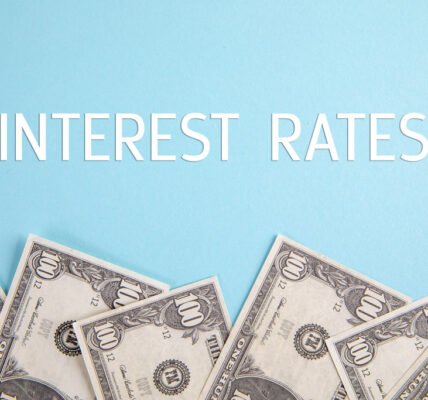In a startling twist of events, the United States government is facing an uphill battle as interest rates experience an unprecedented surge, casting shadows over its financial stability. The past year has witnessed a rapid increase in interest rates, triggering concerns of potential collateral damage to the nation’s economy. The key factor at play is the domino effect: as interest rates escalate, so does the federal government’s expenditure on servicing its massive $32.68 trillion debt.
A grave prediction emerges from the most recent estimates by the Congressional Budget Office (CBO): the interest payments on the national debt are on a trajectory to become the fastest-growing segment of the federal budget in the upcoming three decades. A convergence of factors, including elevated inflation, ascending interest rates, and relentless expansion of the national debt, is projected to lead to a tripling of interest payments. These payments are set to leap from the current fiscal year’s nearly $475 billion to a staggering $1.4 trillion by the year 2032.
Astoundingly, by the year 2053, the projections foretell a seismic surge in interest payments, surmounting an astounding $5.4 trillion. To put this into perspective, this figure eclipses the combined expenditures on Social Security, Medicaid, Medicare, and defense. The repercussions ripple through the economy, with the total interest on the national debt expected to account for a record 3.2% of the Gross Domestic Product (GDP) by 2030. This proportion is poised to more than double, ballooning to 6.7% by 2053.
Alarming Financial Landscape: Experts Weigh In
Foremost financial voices are raising concerns. The Committee for a Responsible Federal Budget, a strong advocate for deficit reduction, predicts that interest expenditure will dominate the federal budget by 2051. Surpassing even major spending programs like Social Security, Medicare, and Medicaid, interest costs are set to become the single largest line item.
Historically, the U.S. has benefited from low borrowing costs due to interest rates remaining subdued. However, the landscape is evolving. The increase in the federal funds rate has repercussions for short-term rates on Treasury securities, signaling more expensive federal borrowing.
“The growth in interest costs presents a significant challenge in the long-term as well,” warns the Peter Peterson Foundation.
Heightened Uncertainties: Federal Reserve’s Role
The Federal Reserve’s move to raise interest rates 11 times in a span of just 16 months has added to the uncertainties. These hikes have pushed rates to levels unseen since 2001. While there’s been hope for a pause, the release of Federal Reserve meeting minutes suggests the possibility of further hikes. Policymakers are eyeing potential “upside risks” to inflation.
The Road Ahead: Balancing Fiscal Priorities
The Committee for a Responsible Federal Budget anticipates interest payments could consume nearly 35% of all federal revenue in the coming three decades. Their call to Congress is clear: address the national debt to navigate future fiscal challenges. A high interest burden not only diverts resources from other priorities but also restrains borrowing during emergencies or wars.
As the nation grapples with rising interest rates and an ever-growing debt, the consequences are far-reaching. Borrowing costs will escalate, elevating the specter of financial crises. Moreover, this trend erodes funding available for crucial economic investments, such as education, research, and infrastructure.
Presidential Impact
Adding to the turmoil, President Biden and Democratic lawmakers contributed to a recent surge in the national debt. By September 2022, President Biden had approved approximately $4.8 trillion in borrowing, with significant allocations to initiatives like the American Rescue Plan and the bipartisan infrastructure bill.
In a landscape fraught with financial uncertainties, the United States stands at a crossroads, tasked with safeguarding its economy while taming the swelling tide of debt. Balancing these competing interests will demand strategic decisions and cooperative efforts by both policymakers and economic leaders.
Download our app MadbuMax on the Apple App Store for the latest news and financial tools. Interested in getting your finances in order do not forget to check Dr. Paul Etienne’s best-seller book on personal finance. To access more resources, tools, and services please click here. Also, do not forget to follow Dr. Etienne on IG or Twitter.





